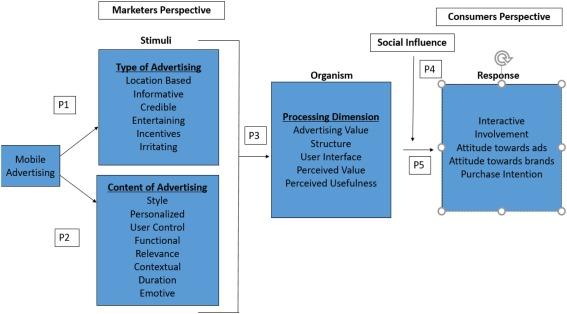Case Studies of Successful Inclusion Strategies: Proven Approaches That Drive Results
In today’s dynamic business landscape, diversity and inclusion have evolved from buzzwords to essential components of organizational success. Companies worldwide are investing in inclusion strategies that empower individuals, bolster performance, and foster innovation. However, turning intention into impact requires more than policy statements; it demands actionable, proven approaches. In this article, we delve into case studies of successful inclusion strategies, explore their benefits, and provide practical tips to drive real results within your association.
Why Inclusion Strategies Matter
An inclusive workplace culture doesn’t just enhance employee well-being—it is directly linked to increased productivity, innovation, and organizational profitability. Studies show that companies in the top quartile for gender or ethnic diversity are more likely to financially outperform their competitors. By implementing effective inclusion strategies, organizations can:
- Attract and retain top talent
- Improve employee engagement and satisfaction
- Encourage creative problem-solving and innovation
- Build a positive brand reputation
- Achieve wider market reach and customer loyalty
Key Elements of Successful Inclusion Strategies
While every organization is unique, the most effective workplace inclusion strategies share a few core elements:
- Leadership Commitment: Clear support and accountability from executives and managers
- Inclusive Policies: Comprehensive, fair hiring, promotion, and retention practices
- Education & Training: Ongoing unconscious bias, cultural competency, and allyship programs
- Employee Resource Groups (ergs): Voluntary, employee-led groups that foster community and advocacy
- Feedback Mechanisms: Open channels for feedback and regular assessments of DEI initiatives
Case Studies of Proven Inclusion Strategies in action
1.Microsoft: Building accessibility and Empathy
Microsoft has long been a leader in inclusion and accessibility strategies. The company’s Autism Hiring program exemplifies a strategic approach to inclusive hiring. By tailoring the recruitment process to focus on skill assessments and accommodate neurodiverse candidates, Microsoft significantly increased the employment rate among individuals on the autism spectrum.
- Key Takeaway: Inclusive hiring processes, when customized to an individual’s strengths, open the door for diverse talent to thrive.
- Result: Increased innovation, higher productivity, and a workplace culture that values unique perspectives.
2. Procter & Gamble: Elevating Employee Resource Groups
Procter & Gamble (P&G) leverages Employee Resource Groups (ERGs) to champion inclusivity. Their internal groups support diverse communities such as women, LGBTQ+, veterans, and employees with disabilities. P&G empowers these groups to lead mentoring programs, provide feedback on company policies, and drive inclusive marketing initiatives.
- Key Takeaway: ERGs are not just social hubs—they are business partners that inform decision-making and strategy.
- Result: Enhanced policy relevance, higher employee retention, and increased representation in leadership.
3. Accenture: Embedding inclusion in leadership
accenture’s inclusive leadership training is central to their global DEI strategy. The company mandates unconscious bias training for all managers and integrates inclusion goals into performance reviews. Leaders are held accountable through regular progress reports and transparency in diversity metrics.
- Key Takeaway: Training alone is not enough—holding leaders accountable is essential for sustained change.
- result: Improved diversity metrics at all leadership levels and a culture of inclusivity embedded in daily operations.
4. IBM: Creating pathways for Women in Tech
IBM’s tech re-entry program offers a lifeline for women who have taken career breaks. The initiative provides mentorship, upskilling, and flexible work arrangements, enabling high-potential candidates to reintegrate into technical roles.
- Key Takeaway: Flexible, supportive return-to-work programs can dramatically boost gender diversity in STEM fields.
- Result: Increased female representation in technology roles and a broader, stronger talent pipeline.
5. Salesforce: Measuring and closing the Pay Gap
Salesforce employs a data-driven approach to inclusion, regularly analyzing pay equity across gender and minority groups. When discrepancies are discovered, the company proactively makes salary adjustments to ensure fairness.
- Key Takeaway: Obvious data analysis and action are critical in building organizational trust and equity.
- Result: Salesforce is widely recognized for its commitment to pay equity and inclusive workplace culture.
Benefits of Implementing Inclusion Strategies
- Higher Employee Engagement: Inclusive environments make employees feel valued and empowered.
- Improved Financial Performance: Diverse organizations are 35% more likely to outperform less diverse peers financially.
- Greater Innovation: Varied perspectives lead to better products, services, and decision-making.
- Reduced Turnover: Employees are more likely to stay in companies where they feel respected and included.
- Business Growth: Inclusion enables companies to connect with a broader customer base.
Practical Tips for Developing Successful Inclusion Strategies
- Conduct Regular Assessments: Use surveys,focus groups,and data analytics to benchmark and track progress.
- Foster Open Communication: Encourage employees to share experiences, challenges, and ideas through regular forums.
- Prioritize Inclusive Leadership: Equip leaders with the training and accountability mechanisms necessary for success.
- Create Pathways for Advancement: Ensure all employees have equal access to mentorships, promotions, and progress opportunities.
- Celebrate Diversity: Amplify success stories, cultural heritage months, and employee achievements publicly.
First-Hand Experiences: Voices from the Field
“Participating in our company’s ERG allowed me to mentor new hires and influence inclusive policies. I’ve felt more valued and empowered in my career as a result.” — Maria T., Senior Engineer
“The returnship program gave me the confidence and support to re-enter the workforce after a five-year break. Now,I lead a diverse team that’s making real impact.” — anika S., Digital Analyst
Conclusion: Turning Inclusion Strategies into Sustainable Success
The case studies of successful inclusion strategies highlighted above demonstrate that meaningful, data-driven approaches foster not just higher DEI metrics, but enduring cultural change. Whether you are just beginning your diversity and inclusion journey or looking to scale,remember that real success is rooted in:
- Leadership commitment and accountability
- Transparent,actionable policies
- Empowered employees and open feedback channels
- Intentional measurement and continuous enhancement
By learning from proven examples,embracing best practices,and listening to employee voices,any organization can transform inclusive intentions into measurable impact. Start today—build a workplace where everyone can thrive, innovate, and succeed.

